THE WHEELS OF THE GODS GRIND SLOWLY,
YET THEY GRIND EXCEEDINGLY FINE.
TRAIL OF BONES
TRAIL OF BONES
MORE CASES FROM THE FILES OF
A FORENSIC ANTHROPOLOGIST
Mary H. Manhein
LOUISIANA STATE UNIVERSITY PRESS

BATON ROUGE
Copyright 2005 by Mary H. Manhein
All rights reserved
Manufactured in the United States of America
First printing
DESIGNER: AMANDA MCDONALD SCALLAN
TYPEFACE: ADOBE GARAMOND
PRINTER AND BINDER: THOMSON-SHORE, INC.
Library of Congress Cataloging-in-Publication Data
Manhein, Mary H. (Mary Huffman)
Trail of bones : more cases from the files of a forensic anthropologist / Mary H. Manhein.
p. cm.
ISBN 0-8071-3104-0 (cloth : alk. paper)
1. Forensic anthropologyLouisianaCase studies. 2. Forensic osteologyLouisianaCase studies. I. Title.
GN69.8.M36 2005
614. 17dc22
2005003409
The paper in this book meets the guidelines for permanence and durability of the Committee on Production Guidelines for Book Longevity of the Council on Library Resources.

To my grandson, Will
My greatest inspiration
Illustrations
Preface
Forensic anthropology is an applied specialty within the discipline of anthropology. In this medico-legal area of forensic science, physical anthropologists trained in human skeletal anatomy examine and analyze human remains in an effort to identify the dead. This specialty requires a devotion to science, the ability to remain objective, a compassionate countenance, and the tenacity of a junkyard dog focused on its target.
As a forensic anthropologist, one of the questions I am asked most often is, What are you doing in a field like this? I think this question comes from the recognition that I have a passion for life and for humor. In fact, humor often saves me when things around me are not very pleasant. At a young age, I wanted to be a comedian. I saw how my antics made people laugh. However, when I tried stand-up comedy, I would start laughing at my own jokes before I delivered the punch lines and usually couldnt finish the jokes. Ive never been able to keep a straight face when it comes to a funny tale, so, even early on, I knew my days as a comedian would be short indeed.
I also knew that education could be the key to any career one desires. I believe that a good dose of formal education often will lead you to your calling. It did for me. When I registered the younger of my two children for kindergarten, I matriculated as a freshman at Louisiana State University (LSU). Ultimately, I chose a career that seems to be the antithesis of my love for life and humor: investigating death. Not one funny thing about it. But one of the main reasons I picked a field that deals with death on a regular basis is simple: I can do nothing to bring back the dead, but I can help provide justice for those who can no longer speak for themselves.
While working as a forensic anthropologist for more than twenty-four years, Ive also remained an advocate for the victims. I examine their bones to make sense out of who they are and to try to determine what happened to them in their last few moments before death. I strive to tell their life story from their bones.
The case studies chosen for this book are all truereal stories about real people, some cases solved, others unsolved. The names of certain victims have been changed to protect their privacy and that of their families.
Acknowledgments
To all of the law enforcement agents, coroners, crime lab investigators, and laboratory specialists who daily give your hearts and souls to your jobs, I salute you, and I thank you for allowing me into your circle of confidence. Because of you, many of the cases described in this book have been solved.
To the team of specialists with whom I work daily, Eileen Barrow, Beth Bassett, and Ginny Listi: no other forensic anthropology and imaging team in the country has so much talent concentrated in one small lab. I could not do what I do without you.
To Kerry Lyle, photographer, and Mary Lee Eggart, scientific illustrator, thank you for always being there to assist us in your most extraordinarily professional manners.
To my agent, David Madden, thank you for all of your assistance.
To Louisiana State University Press, thank you for your confidence in my work. I especially thank George Roupe, my editor, for his remarkable attention to detail and for his editing style.
Finally, to my loving family, thank you for always being there.
1
The End of the Road
L ARRY FISHER was walking home along the railroad track that day near dusk. He was in a hurry. It was getting late and he didnt want to lose the last light of day that guided him. Looking down into the tangled brush some thirty feet below the raised track, he saw what he thought was a human leg. He was so sure of it that he climbed down the access ladder nearest him to take a closer lookit was a human leg and a hip and a foot. He did not touch them, nor did he want to do so. The remains were in an advanced stage of decomposition, and fly larvae, or maggots, swarmed over them in the thousands. He thought someone must have been run over by a train.
It was almost 5:00 P.M. on a Saturday evening when the sheriffs office called me that day in late December. A phone call from law enforcement on the weekend was always a serious call. We all liked our days off. A set of partial human remains had been found near a railroad track and officers needed help. Could I come? Those guys knew I would always go to any scene. We had worked on so many cases together over the years that I had lost count of them. They explained where they were. Being familiar with the area, I hopped in my Jeep and took off. Over the years, I have traveled to more than 75 percent of all of the towns and cities in Louisiana, even those in remote areas of the state that, in the last fifty years, have been reduced to whistle-stops.
Arriving just before dark, I met the case detectives near the end of a short, rural road that ended just before it reached a river. Louisiana is full of rivers and bayous, and much of my work revolves around pulling people out of one or the other. This was different. To my left was a railroad track. To my right was a single row of modest homes dotted by mailboxes at the edge of the blacktop. The long line of sheriffs department and other vehicles was strung up and down the road. Some were empty. Others were occupied by detectives and crime scene personnel awaiting my arrival.
We greeted one another with the usual hello, how are you, and my cynical, half-serious remark that they better not have called me out on a Saturday evening for a dog or deer that had been run over by a train. They laughingly assured me they had not and motioned for me to follow them. Obviously, we were not yet at the scene, though we were at the end of the road. They pointed up the rise to the railroad track. Your vehicle awaits you, madame, one of the wisecrackers said.
I replied, Youre kidding, right? They just laughed and started toward the motorized rail car that sat on the track. That was my first close encounter with one of the little motorized cars you see going up and down railroad tracks, usually with only one person on them, and often blocking a major intersection as the car slowly passes through. By the time we boarded the car, it was black on either side of us and behind us. The lone illumination was the cars single headlight. Though the driver assured me there were no trains due along the track from the opposite direction any time soon, I was not comforted by the thought. I had ridden behind officers on four-wheelers throughout the woods of Louisiana, sped through swamps on flatboats that operate like hydrofoils as they skim the grassy marshes, and clung to the safety bar in law enforcement vehicles on high-speed chases that occasionally interrupted our scheduled travel to a death scene. However, I was not prepared for the eerie feeling I had when I made the mistake of looking out the rail car and catching a glimpse of moonlight on water more than thirty feet below. I shuttered inwardly and held onto the handrail just a little tighter.


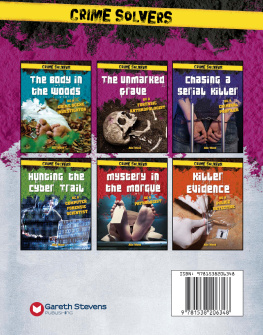
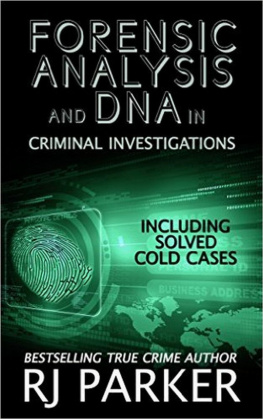



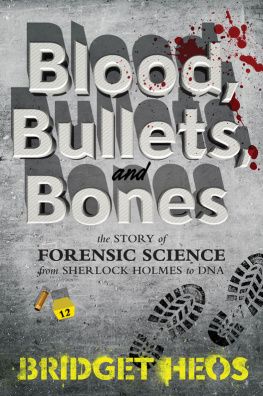
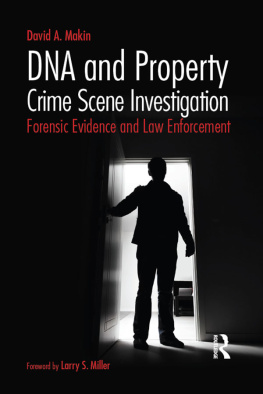
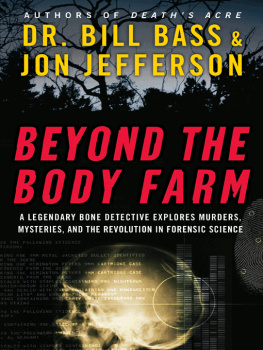
 BATON ROUGE
BATON ROUGE